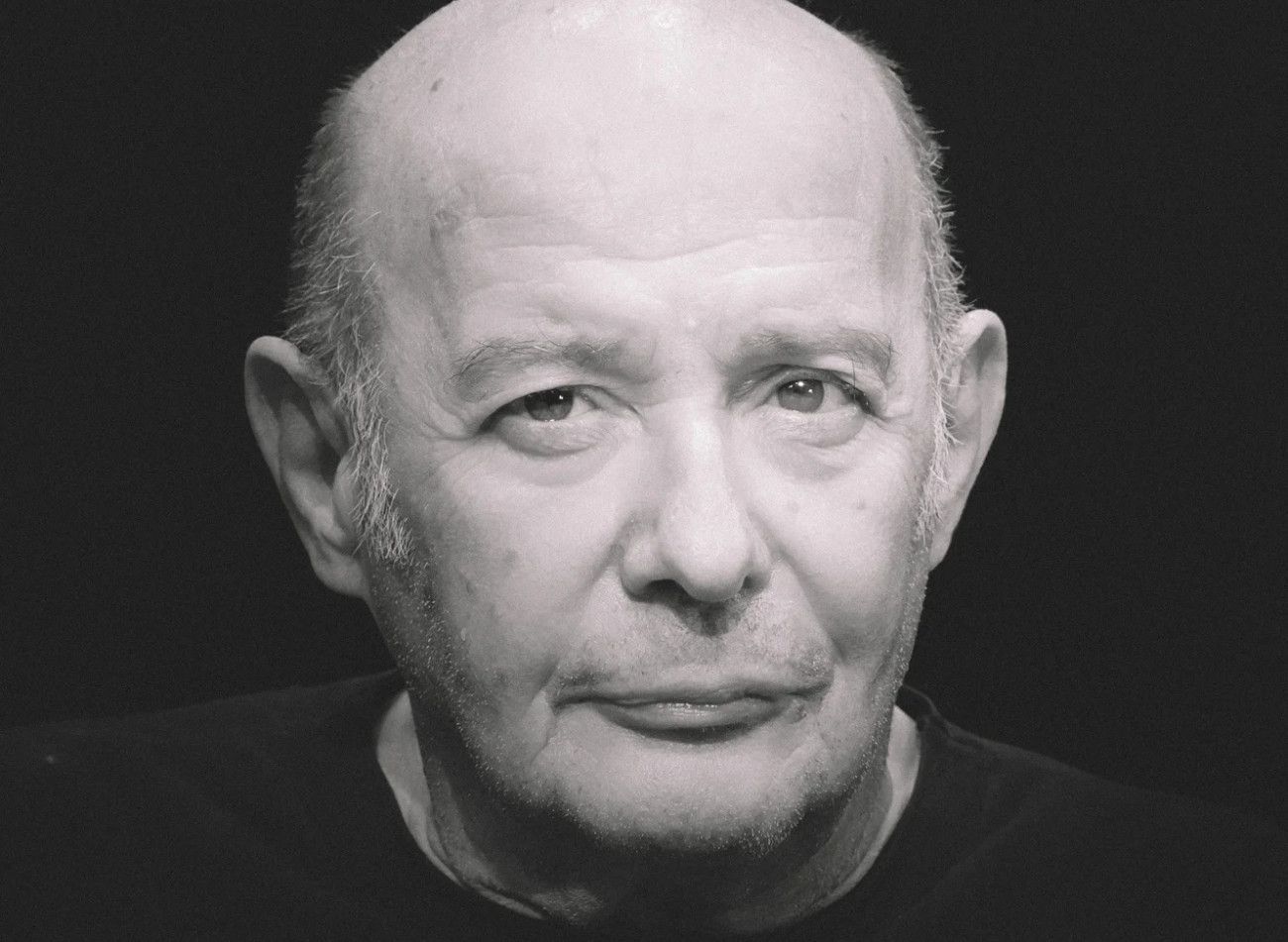Doctors also call her an invisible disease. Its diagnosis may take years (conversation)

We talked about fibromyalgia with rheumatologist Roman Stančík.
The main symptom of fibromyalgia is extensive body pain. It can migrate, spread in several areas and fluctuate in its intensity.
Since we still do not have enough information about this disease until patients come to diagnosis, they often have to visit several specialists.
« At first glance, patients with fibromyalgia act as completely healthy people. Even in a normal clinical examination, nothing pathological will be revealed, » says rheumatologist Roman Stančík from the National Institute of Rheumatic Diseases in Piešťany.
« If the doctor gives them basic laboratory tests, they are usually negative or there are only some insignificant deviations. Therefore, it often happens that patients come from the doctor to the doctor, visit various outpatient clinics, but do not encounter understanding, » he adds.
In the interview you read:
- When the doctor begins to consider whether the patient suffers from fibromyalgia.
- What are its typical symptoms.
- Why it is not enough to just test blood or look for a specific gene.
- Whether it is a rare disease.
- How often a rheumatologist encounters this diagnosis in an outpatient clinic.
- At what age this diagnosis is most often manifested.
- How long does it take before the patient at all comes to diagnosis.
- What awaits him after diagnosis.
- Whether a change in diet, movement or acupuncture can also help patients.
If we look into the past, the first references to fibromyalgia come from the beginning of the nineteenth century. At that time, many doctors still believed that it was a psychiatric illness, the main cause of which is stress. What has changed since then? What is today’s view of doctors about this disease?
Fibromyalgia is not a new disease that occurs only today. It also occurred in the past, but his diagnosis was the problem.
The reason is that the symptoms of fibromyalgia are very non -specific. Therefore, doctors often took it so that taxed people are only more anxious, hypersensitive, even could be described as hypochonders.
However, knowledge of this disease is still progressing and we already know that this is a separate diagnosis that also has its code in the international classification of diseases.
So today doctors no longer consider patients with fibromyalgia to be hypochonders?
We cannot say this clearly. Although from what patients tell me, unfortunately, it is still in normal practice. This may result from the inexperience or ignorance of doctors about the disease, but there are probably more causes.
Fibromyalgia is usually referred to as the so -called invisible disease. This is because patients have no apparent physical or mentally handicap. At first glance, they act as completely healthy people with this disease.
Even in a normal clinical examination, nothing pathological is revealed. If the doctor gives them basic laboratory tests, they are usually negative or there are only some insignificant deviations.
Therefore, it often happens that patients come from doctor to doctor, visit various outpatient clinics, but do not encounter understanding. Their symptoms are attributed to something else, they are often downplayed, sometimes they leave with a well -intentioned advice that maybe it is just sophistication, stress, they only need to relax a little, recharge their forces, or the doctor prescribes something to calm or better sleep.
They often circulate from one clinic to another, which only continues to spin their vicious circle of difficulties and frustration.
The main symptoms of fibromyalgia include fatigue and body pain, which moves into different parts of the body. As you said, these are very non -specific symptoms. So when do you get to think and think about whether the patient has fibromyalgia?
Fibromyalgia is an exaggerated, often extreme perception of painful stimuli.
Popular pain is typical – patients often cannot accurately determine or characterize it. They say they « hurt the whole body », or that the pain they feel migrates.
Other typical manifestations are chronic fatigue and sleep disorders.
The spectrum of symptoms is very wide and may include also headachesfeelings of tingling, stiffness or digestive difficulties, such as an irritating cloud.
The disease is often accompanied by a mental imbalance, be it depression, anxiety, or even cognitive disorders (memory disorders or concentration, note ed.).
Therefore, in the first step it is very important to make a thorough medical history. To listen to the patient, find out when they last these difficulties, whether they were seriously preceded by something serious and whether they are also associated with another disease.
It is therefore a comprehensive approach based on a medical history, clinical and laboratory examinations, which we cannot confirm fibromyalgia, but we must exclude other diseases that may cause the cause reports.
Therefore, today the diagnosis of this disease is relatively complicated.
What is the problem? Why is it not enough to follow any specific parameters in the blood or mutation of a certain gene?
Because we lack objective indicators for fibromyalgia. There is also no specific laboratory test to confirm or exclude it. In this case, even imaging methods are not important.
We are dependent on eliminating other diseases and then we just have to listen to the patient well, or do some additional clinical examination to say that a person is very likely to suffer from fibromyalgia.
Which diseases do you need to exclude in fibromyalgia?
Since I am a rheumatologist, we must primarily exclude other systemic autoimmune diseases, such as systemic lupus erythematosus or rheumatoid arthritis, which are very often associated with fibromyalgia in patients in patients who are shipped to us in the first place.
How often do you encounter patients with this diagnosis in the outpatient clinic? Is fibromyalgia a rare disease?
Fibromyalgia is not very common diseases, on the other hand, it is not even a rare diagnosis.
The prevalence of the disease in the population is somewhere between two to four percent.
Roughly every twenty -fifth person may suffer from fibromyalgia or have his manifestations in a certain period of life.
Neurologist: Everybody has insomnia and everyone wants pills. Well the fools do not solve the bad sleep Read
Is there any age in which it occurs more often?
This disease can affect people in different ages: from teenagers to older people. But most often they are middle -aged women.
Why is that so?
We don’t know exactly. Various factors can be involved. Most often it is environmental effects, or physical or mental problems, or combinations thereof.
The trigger of the disease can be any physical or mental trauma: injury, severe illness, infection, but also the loss of a loved one, breakup with a partner, other problems in the family, even loss of employment.
It is also possible that hormonal effects or genetics are also used in this disease. Today, we still cannot say it for sure, the exact cause and mechanism of how this disease arises is still not fully explained.
Is it possible to say how long the patient wanders among specialists before it comes to diagnosis?
At best, these are months, but most of them are more years.
So it may happen that he feels pain for several years, but he still doesn’t know what he is?
It happens, because, as I mentioned, patients often wander from one clinic to another until they come across a specialist who can make this diagnosis.
This is the first important step so that we can treat and manage the patient.
What does the patient expect after diagnosis?
Fibromyalgia is a chronic disease. This means that the patient may alternate better and worse periods, relapses (worsening symptoms of the disease, note red.) Provocated either by the factors of the external environment or by some trauma.
It’s a long -distance run.
Oncologist Korec: I’m a frustrated oncologist who sees people die even if they don’t have to Read
Does the treatment of cooperation between several specialists require?
Certainly yes. Fibromyalgia requires a multidisciplinary approach, ie the cooperation of several experts such as rheumatologist, neurologist, algesiologist, physiatrician or even a psychiatrist or even a psychiatrist
Can patients with fibromyalgia help change diet, movement, or rest from work?
Not completely. Movement or exercise, which is part of virtually all international recommendations, is important. It is proven that regular physical activity brings some benefit in the case of fibromyalgia, it can alleviate its symptoms.
On the contrary, peace is not a positive factor in this case, because the fact that we order the patient to relax or calm will certainly not accept the symptoms of fibromyalgia. On the contrary, it contributes to the fact that the symptoms are even more deepening.
Therefore, I try to emphasize every patient’s importance of movement and regular exercise, which is not always easy.
Patients with fibromyalgia are often extremely hurt, they are also exhausted by work, and at the end of the day they feel like a « beaten dog ». Then it is difficult to convince them that they should spend at least half an hour every day.
At the same time, it does not have to be anything complicated, for example, fast walking, cycling, swimming, yoga, taichi, aerobics. There are enough options, it depends on every patient.
It is also important that physical activity is regular.
Roman Stančík
- He graduated from the Faculty of Medicine of Masaryk University in Brno in 1990.
- He works at the National Institute of Rheumatic Diseases in Piešťany.
- He is dedicated to the treatment of a wide range of rheumatic diseases.
What about acupuncture? Can patients relieve pain?
There are some studies that point out that acupuncture could have a positive effect in this case, but, of course, it is not a miraculous method.
Even the procedure itself, which occurs, can be very demanding for patients, as patients with fibromyalgia perceive any pain extreme. In practice, this method is not used routinely.
What is the most demanding for you when you treat a patient with fibromyalgia?
It is very difficult to convince patients that they too have to do something for themselves. They can’t just expect to prescribe a miraculous tablet or an injection that quickly and vigorously relieves these difficulties.
We try to explain to them that this is a disease that requires a proactive approach and must count on the fact that the results will not appear immediately. It can really take months to years.
The point is to improve the patient’s quality of life, which can be done by combining pharmacological and non -pharmacological methods. Treatment should be individually adapted, each patient is different.
Can it happen that, thanks to his active approach, the patient wakes up one day and finds that no pain is any more pain?
Nowhere is it carved into the stone that if you have fibromyalgia, you have to live with it and die.
There are patients who have been very alleviated over time, and their quality of life has improved significantly.
But it is very individual, because fibromyalgia can run differently in each patient. The spectrum of symptoms and their intensity is different.








